Welcome to our guide on how to smoke mackerel! If you’re looking to add a delicious, smoky flavour to this versatile fish, you’ve come to the right place. In this post, we’ll cover the two main smoking methods: dry smoking and wet smoking. We’ll explore the differences between them, and how they can affect the final product. Whether you’re an experienced smoker or a complete beginner, this post will provide you with all the information you need to smoke mackerel like a pro.
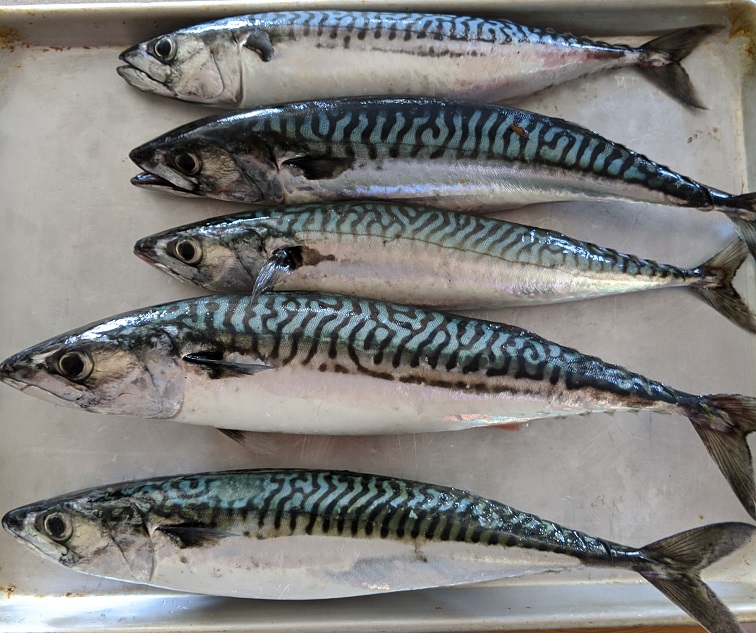
How To Make Smoke Mackerel
Do You Need a Smoker to Smoke Mackerel? Tips for Smoking Without One
If you don’t have a smoker at home, don’t worry – you can still smoke mackerel using some simple equipment you may already have. While a dedicated smoker can make the process more straightforward, there are a few alternative methods you can use.
One option is to use your barbecue. Place a pan of smouldering wood chips on one side and the fish on a rack on the other. Keep the heat low and adjust the distance between the fish and the wood chips to achieve the desired level of smokiness.
If you don’t have a barbecue, you can use a wok to smoke mackerel. Place some wood chips in the bottom of the wok, get them smoking, and cover the wok with tin foil that you poke a few holes in. Then, place the mackerel on the foil and put a lid on the wok. This method can be done on a stovetop or outdoor burner.
Another option is to smoke the fish in a covered grill or oven. Place the fish on a rack and set it on a baking sheet with wood chips in the bottom. Cover the grill or oven and adjust the temperature to achieve the desired level of smokiness.
It’s essential to do any smoking outside, as the process requires good ventilation and can generate a lot of smoke. With a little creativity and some basic equipment, you can smoke mackerel and enjoy its delicious, smoky flavour without a dedicated smoker.
Why Smoke Mackerel?
Mackerel is a popular fish for smoking, thanks to its strong flavour and oily texture. While many types of fish can be smoked, mackerel is a great choice for a few reasons. Firstly, mackerel is often readily available, especially during its peak season when it is running. In many coastal areas, mackerel can be found in abundance, and fishermen often catch more than they can use. This makes it an affordable and sustainable choice for smoking.
Secondly, mackerel’s oily texture makes it ideal for smoking, as it can hold up well to the heat and smoke without becoming dry or overcooked. The result is a flavorful, moist fish that can be eaten on its own or used in a variety of recipes.
Finally, smoking mackerel is a great way to add variety to your cooking routine. If you’re used to cooking with salmon or other types of fish, smoking mackerel can introduce a new flavour profile and add some excitement to your meals.
So if you’re looking to try smoking fish for the first time, or if you’re simply looking for a new type of fish to smoke, mackerel is a great choice. Its availability, texture, and flavour make it a popular and rewarding choice for smoking.
Wet Smoke vs Dry Smoke: Understanding the Differences and When to Use Each Method
When it comes to smoking food, there are two main methods to consider: wet smoking and dry smoking. The main difference between these two methods is moisture. With wet smoking, moisture is introduced into the smoking process, typically with a bowl of water or other liquid in the smoker. This helps to prevent the food from drying out and can result in a more tender, moist final product. With dry smoking, no additional moisture is added, which can result in a drier final product with a chewier texture, similar to jerky.
So, when should you choose wet smoking over dry smoking? Wet smoking is ideal when you want to add flavour while keeping the food moist. This method is often used for items like ribs, chicken, salmon, and pulled pork, where you want to avoid drying out the meat. Adding moisture during the smoking process can help to prevent the food from becoming too dry and can help it to retain a more desirable texture.
On the other hand, dry smoking is ideal when you want to preserve the food or create a chewy, jerky-like texture. Dry smoking is often used for foods that are meant to be stored for longer periods of time, such as beef jerky or smoked fish. This method can also be used to recreate the flavour of foods that were traditionally preserved through smoking, such as ham or bacon.
Ultimately, the choice between wet smoking and dry smoking depends on the type of food you’re smoking and the desired outcome. Both methods can result in delicious, smoky flavours, but wet smoking is ideal for preserving moisture, while dry smoking is ideal for creating a chewy, preserved texture.
Preparing the fish to be smoked.
How to Clean and Fillet Mackerel for Smoking
Properly cleaning and filleting the mackerel is crucial in preparing it for smoking. For the best results, it’s recommended to keep the mackerel mostly intact to retain moisture. Here’s how to clean and fillet the mackerel for both wet and dry smoking:
For wet smoking, leave the mackerel mostly whole and only remove the heads and innards. Start by using a sharp knife to cut the head off right behind the front fins. Then, slice up through the belly and remove the innards.
For dry smoking, follow the same process as for wet smoking but go one step further and cut the fish into fillets. To do this, use a sharp knife to cut one side of the fish just in front of the tail fin. Then, run the knife up the spine towards the head until the fillet is removed. Flip the fish over and repeat the process on the other side.
Once you have cleaned and filleted the mackerel, rinse it under cold running water and pat it dry with paper towels.
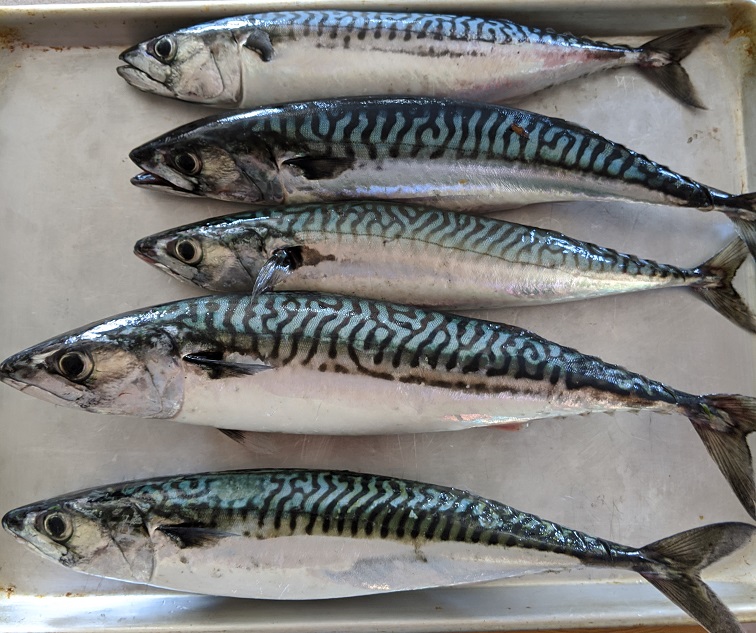
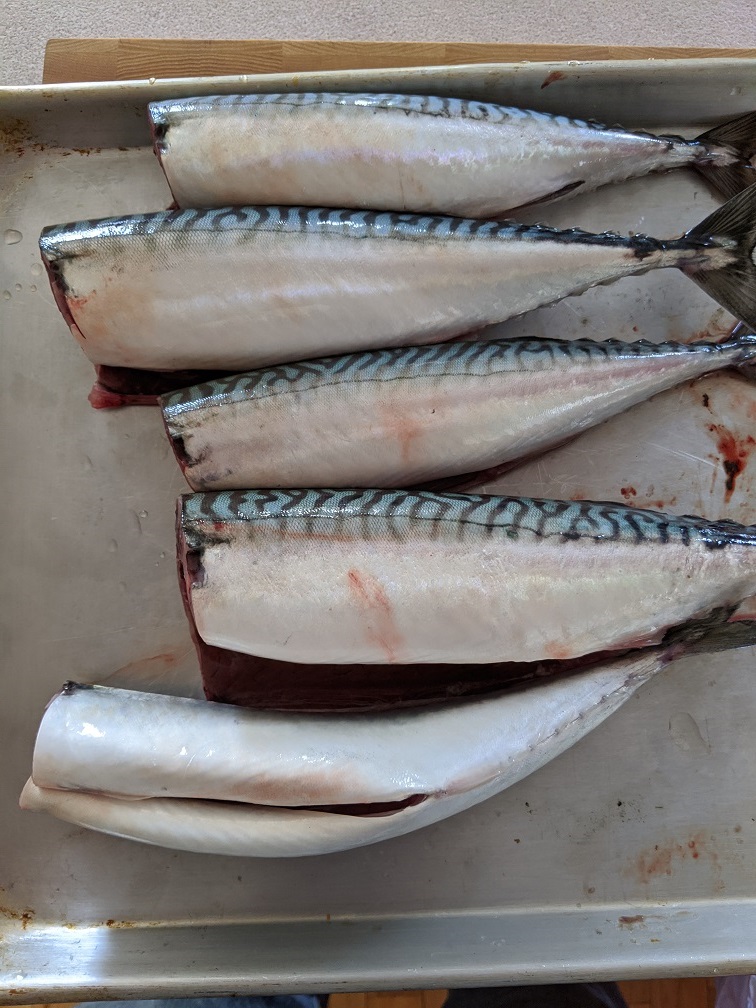
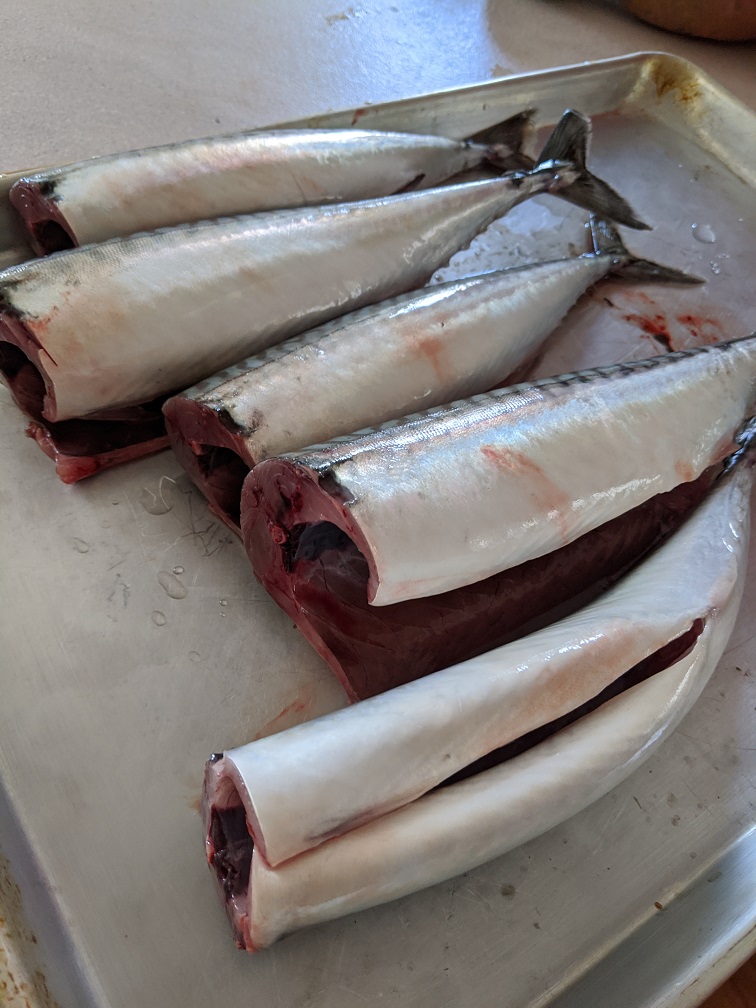
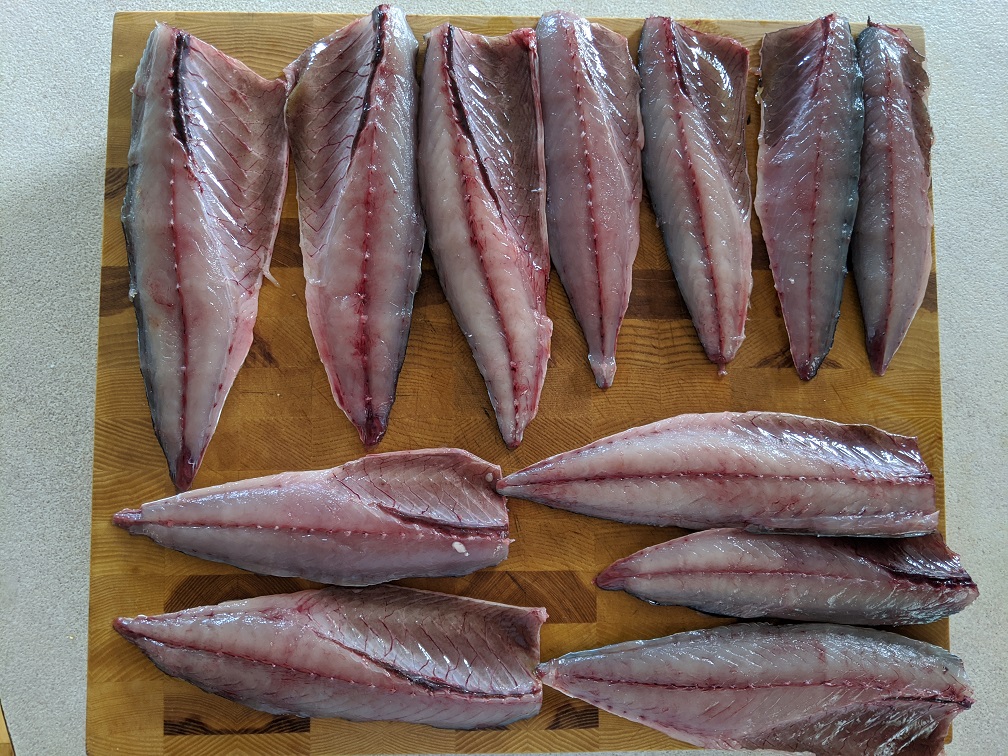
Salting the Mackerel Before Smoking
Salting the mackerel is a crucial step in preparing it for smoking. It helps to preserve the fish during the smoking process, removes excess blood and moisture from the fish which firms up the flesh, and adds flavour. Most importantly, it creates a dry kind of skin on the surface of the fish that helps the smoke stick to the fish imparting more flavour. This salting or curing is done with just about everything that gets smoked.
For whole fish, take a dish and sprinkle a little salt on the bottom. Then, lay one fish down and sprinkle salt (use kosher salt, sea salt, or pickling salt) inside the body cavity and on top of the fish. Repeat this process with all the fish, cover them, and put them in the fridge overnight.
For fillets to be dry smoked, do the same process as for whole fish but only leave them salted for about two hours. Fillets are thinner than whole fish and don’t need as much time being salted.
After the salting period, rinse both batches of fish under cold water and pat them dry with paper towels. The fish is now ready to be smoked using your preferred method.
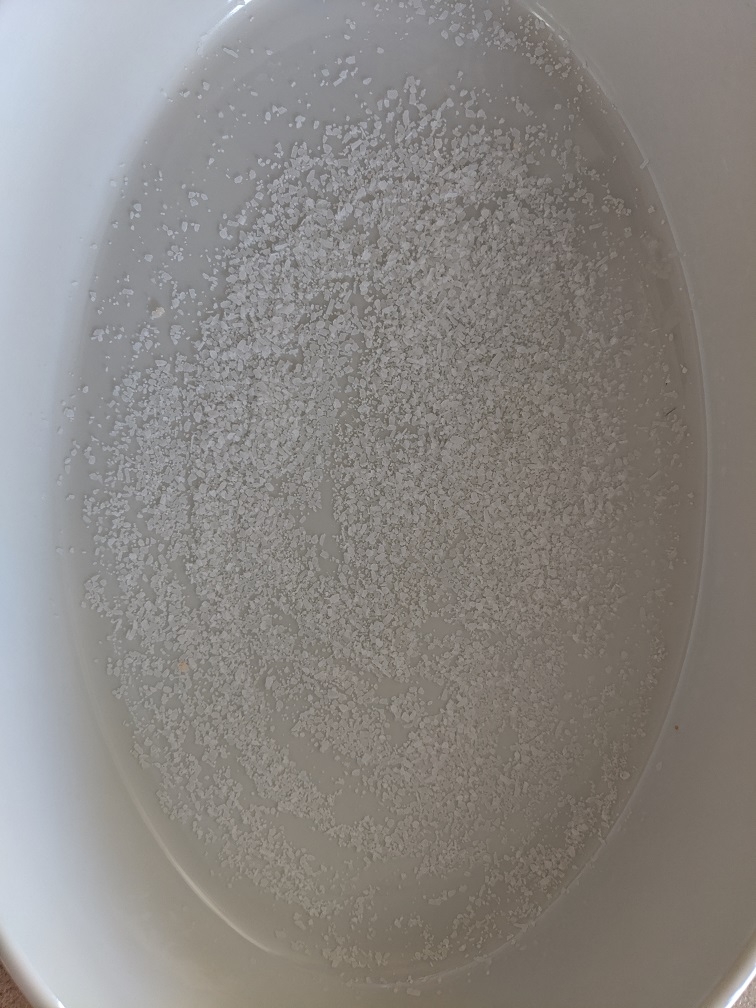
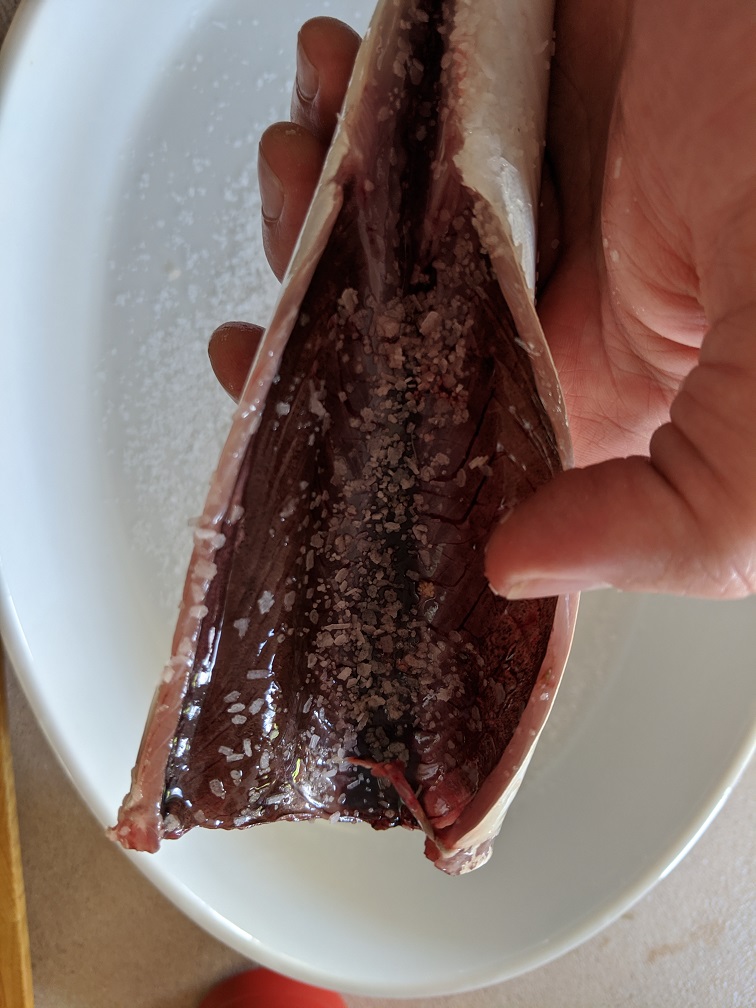
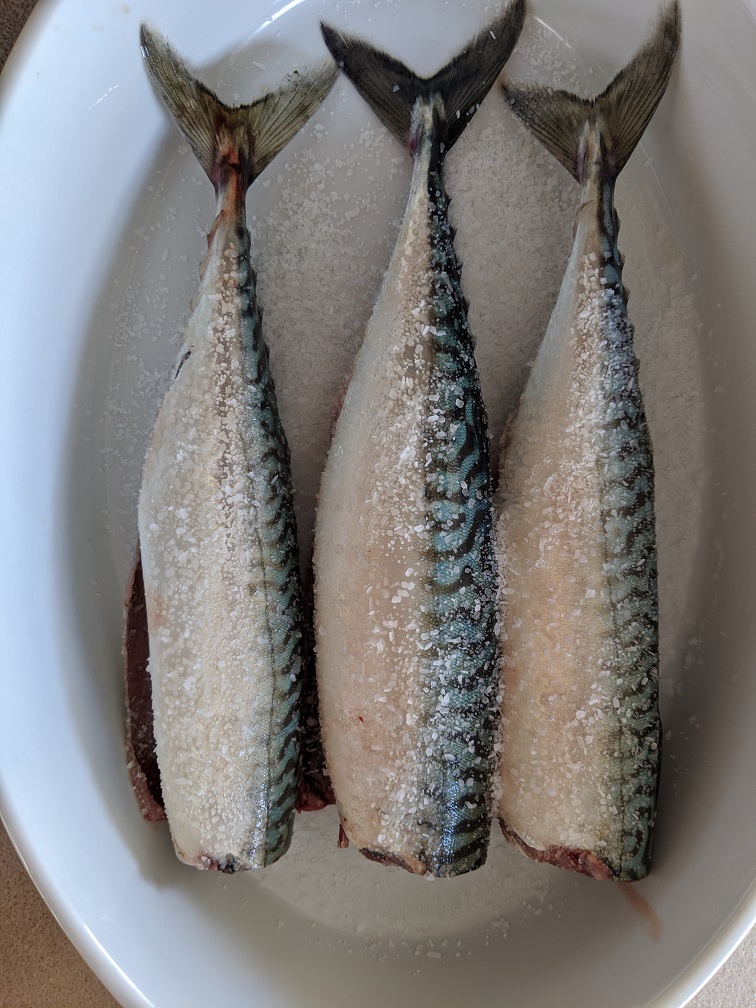
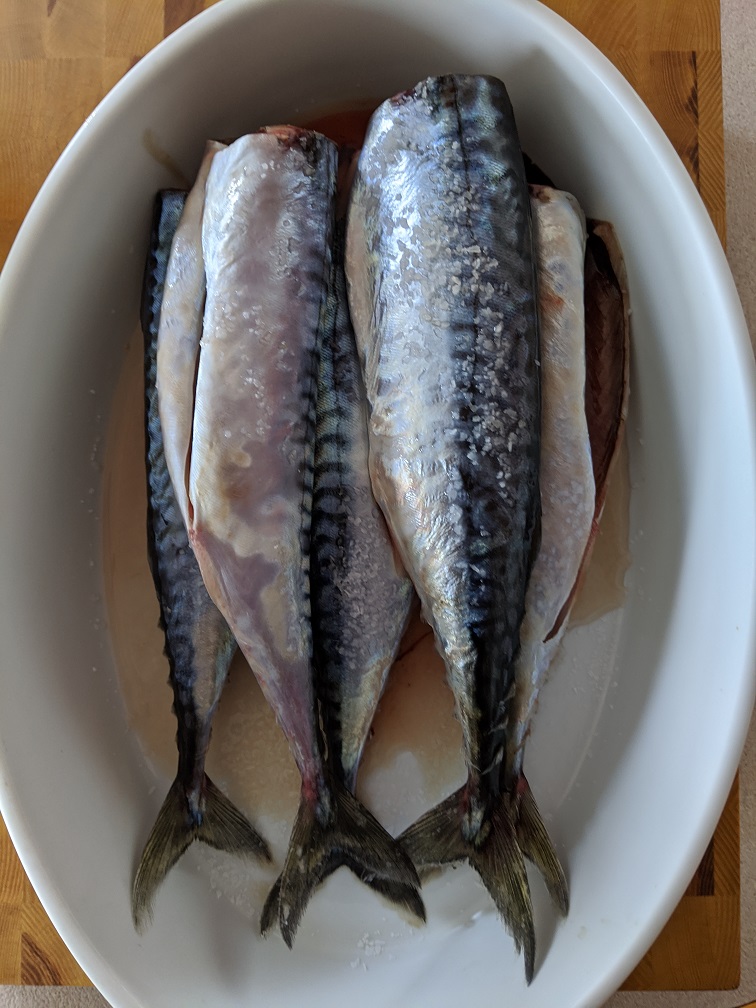
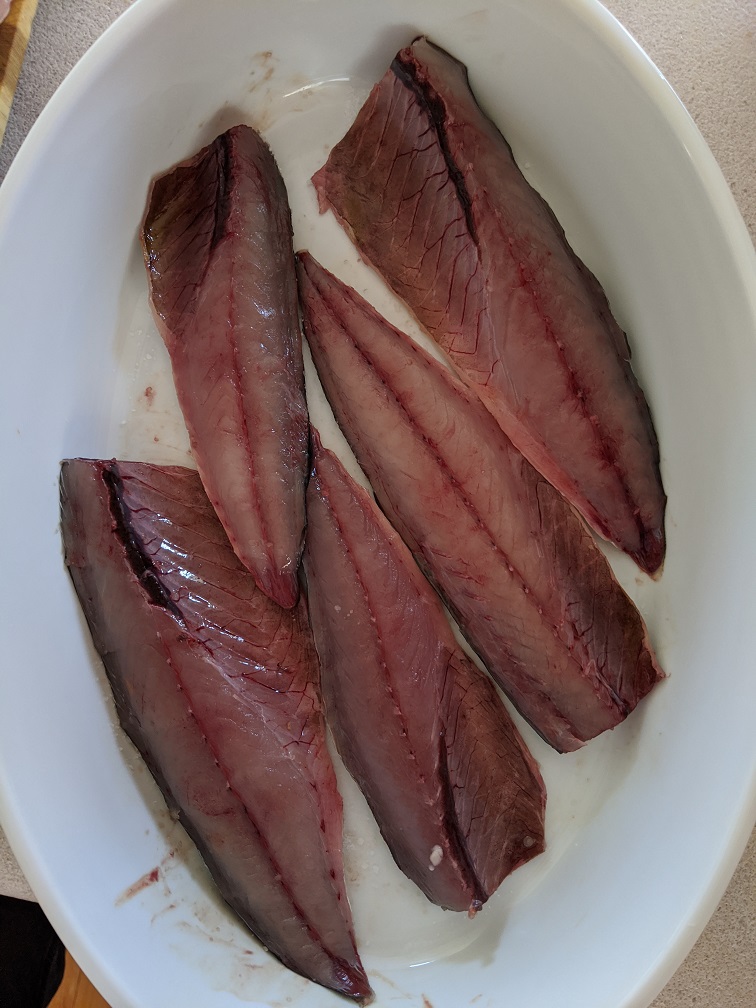
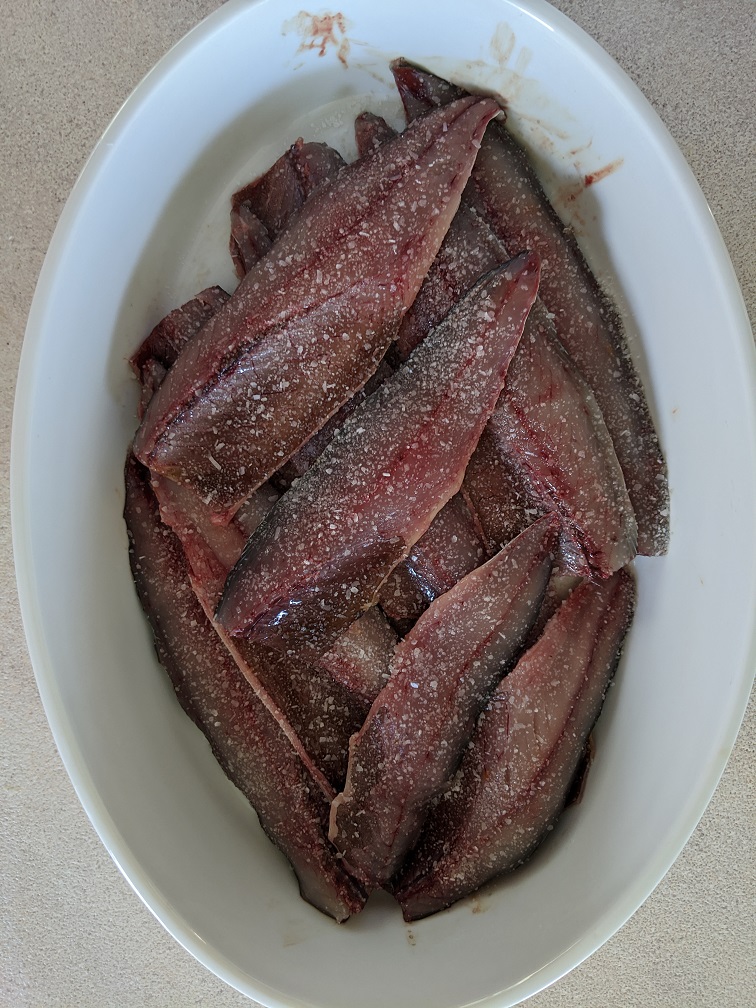
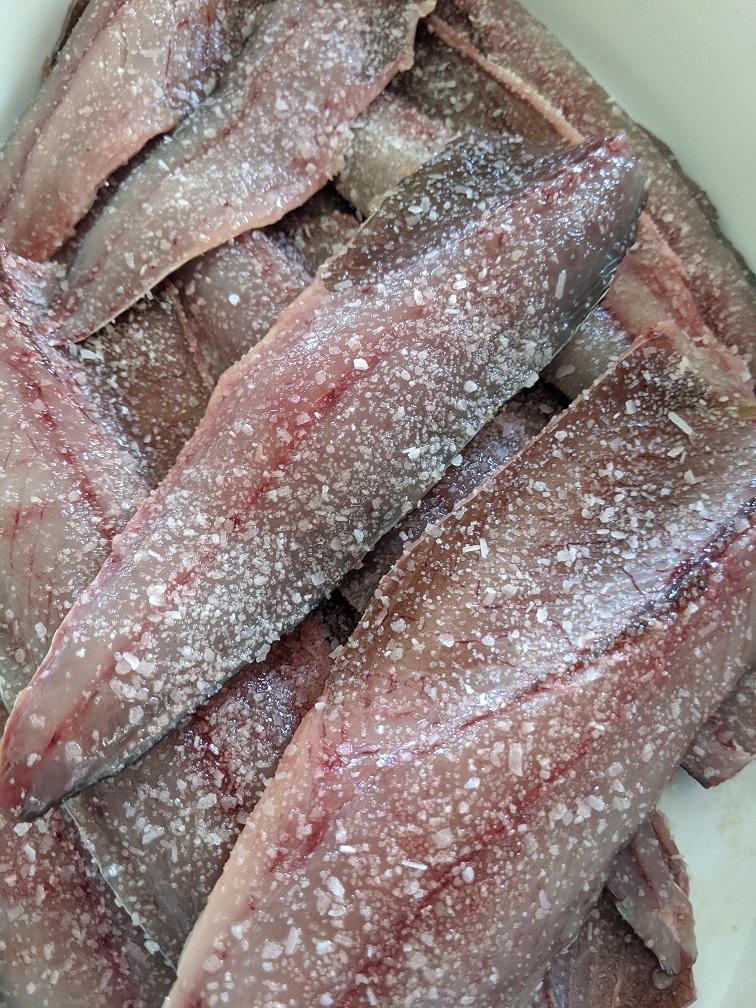
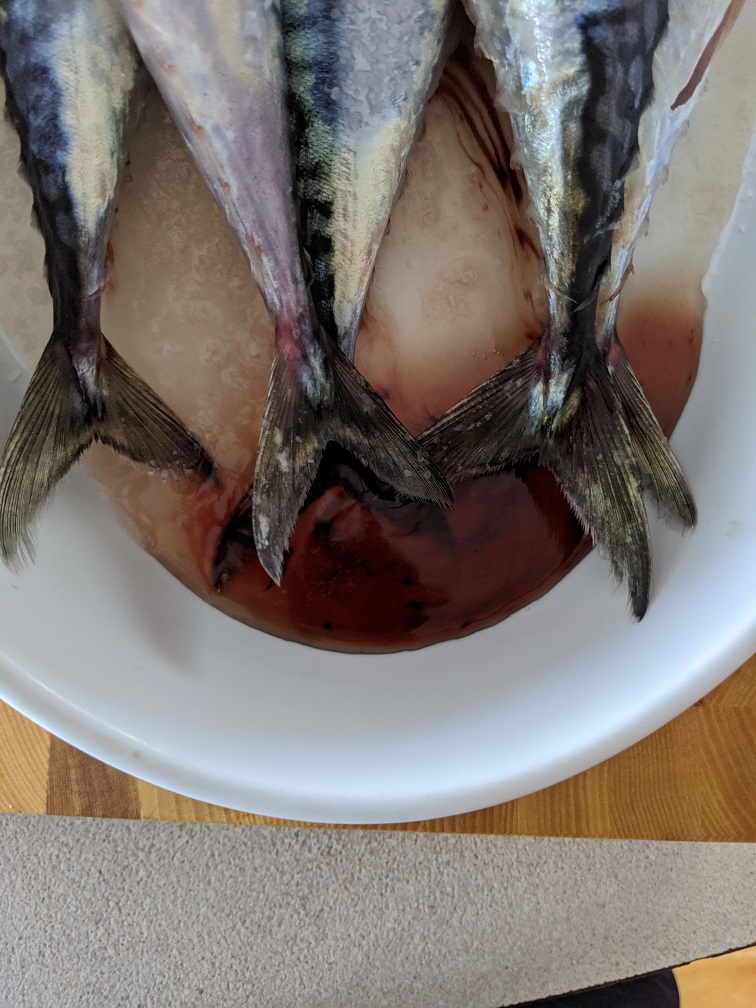
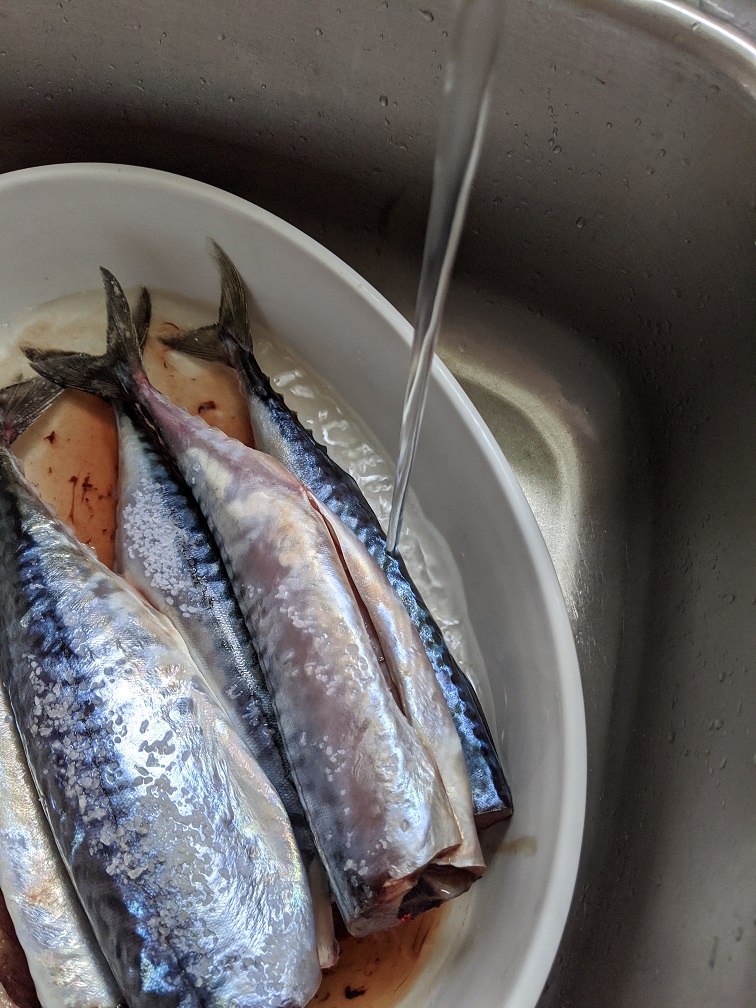
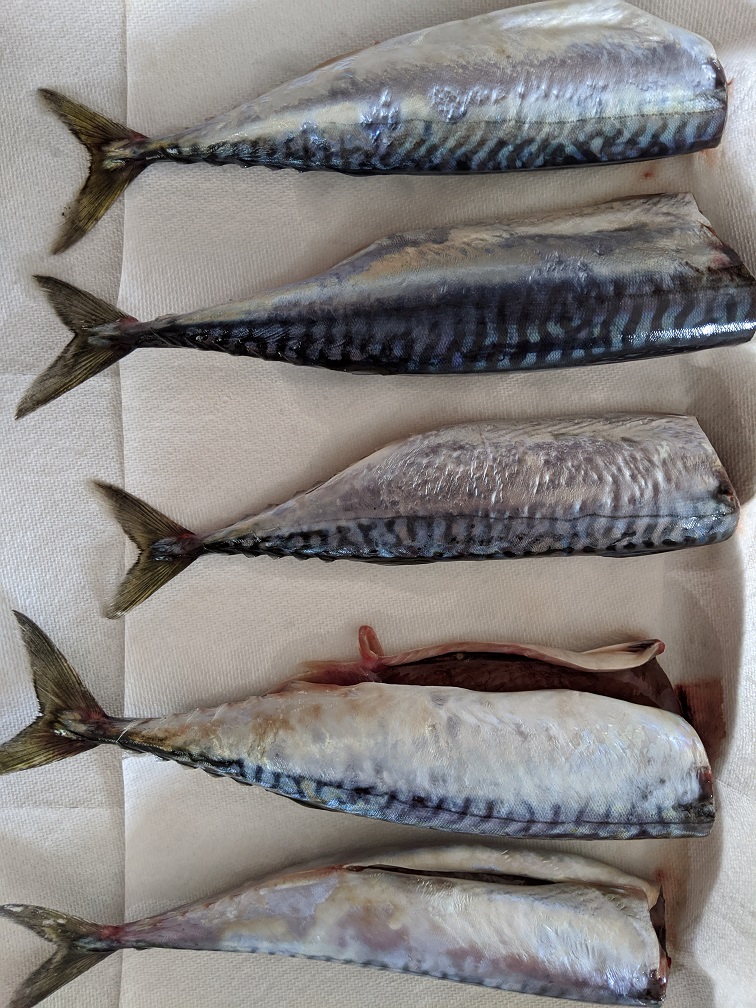
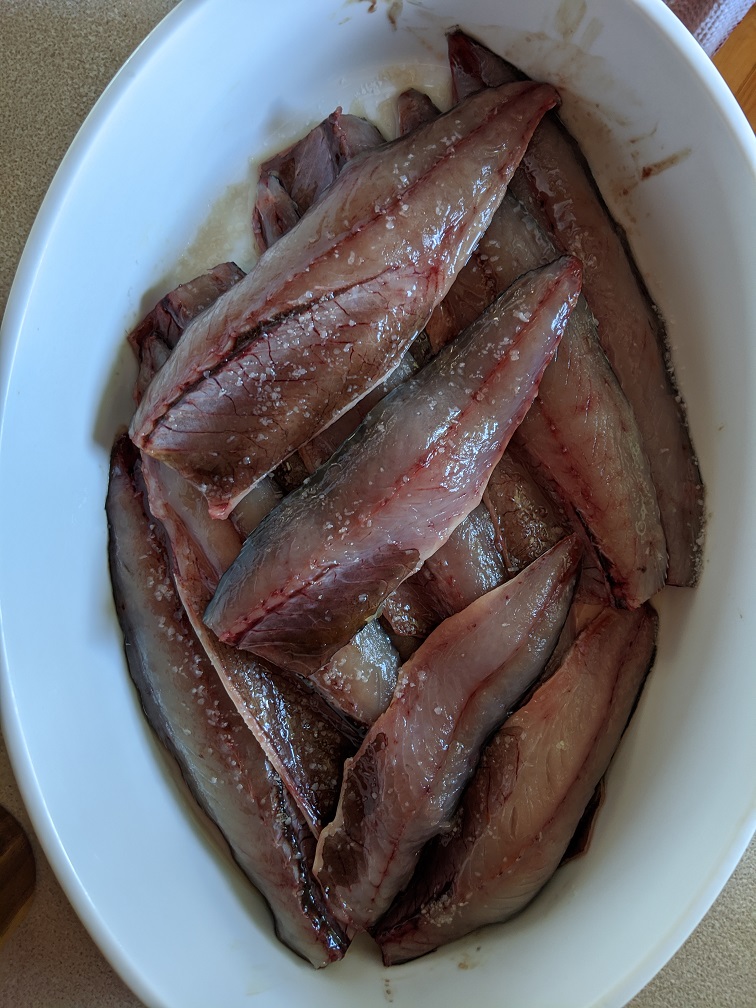
Keep the Body Cavity Open for Wet Smoking
One last thing that can be done to prepare mackerel for wet smoking is to keep the body cavity open during the smoking process. To do this, skewer a toothpick through the belly of the whole fish. This helps the smoke penetrate the fish more deeply, resulting in a richer flavour.
This simple trick is an effective way to ensure that the smoke penetrates the fish fully, creating a delicious flavour that will enhance the natural taste of the fish. It’s a quick and easy step that can make a big difference in the quality of the final product.
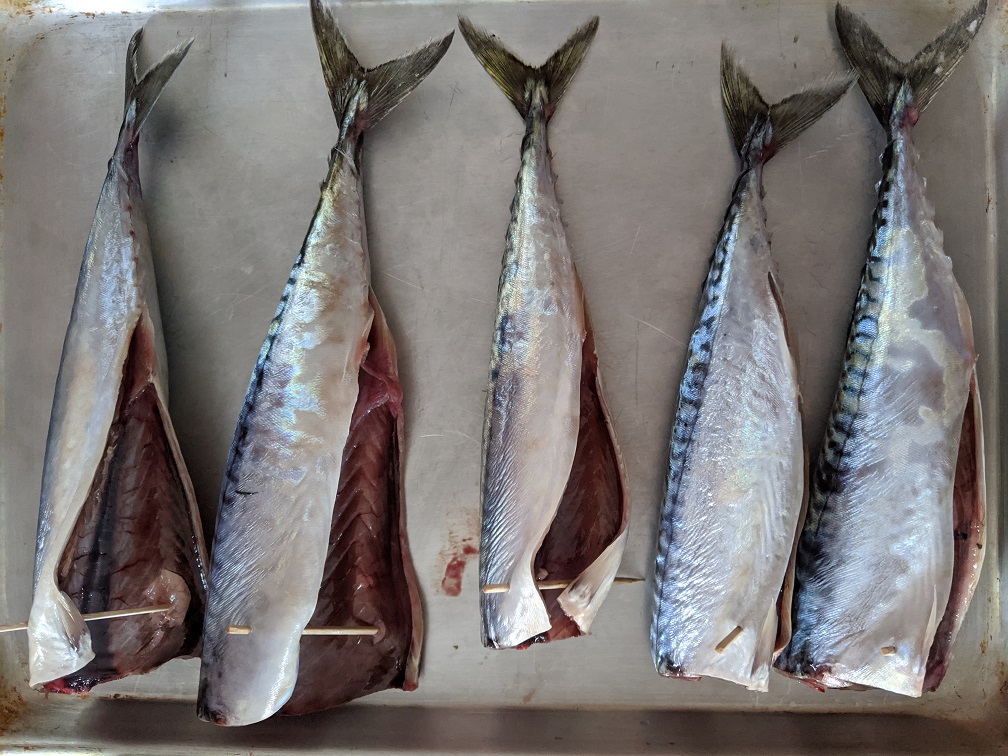
Smoking the Mackerel
Wet Smoking Mackerel with a Barrel Smoker
When wet-smoking mackerel, a barrel smoker is an ideal tool to use. A barrel smoker is shaped like a barrel, with the fire lit at the bottom and a water pan set on top, followed by two racks for food. The water pan has the added advantage of shielding the food from any direct flames or flare-ups, which helps keep the fish moist during the smoking process.
To wet smoke mackerel using a barrel smoker, simply place the salted mackerel on the top rack and cover the smoker. Make sure that the temperature stays at a consistent 225-250°F throughout the smoking process. Add wood chips or chunks, like alder or hickory, to the fire to create smoke. The wet smoking process should take around 1.5-2 hours, depending on the size of the fish.
Throughout the smoking process, check the water pan to ensure that there is enough water to create steam. This steam will help keep the fish moist and prevent it from drying out. After the smoking process is complete, remove the mackerel from the smoker and let it cool down to room temperature then put it in the fridge for up to five days.
Wet smoking is an excellent way to infuse mackerel with a smoky flavour while keeping the fish moist and flavorful. A barrel smoker is an ideal tool to use for wet smoking, and following these simple steps will ensure that you can produce delicious, smoky mackerel with ease.
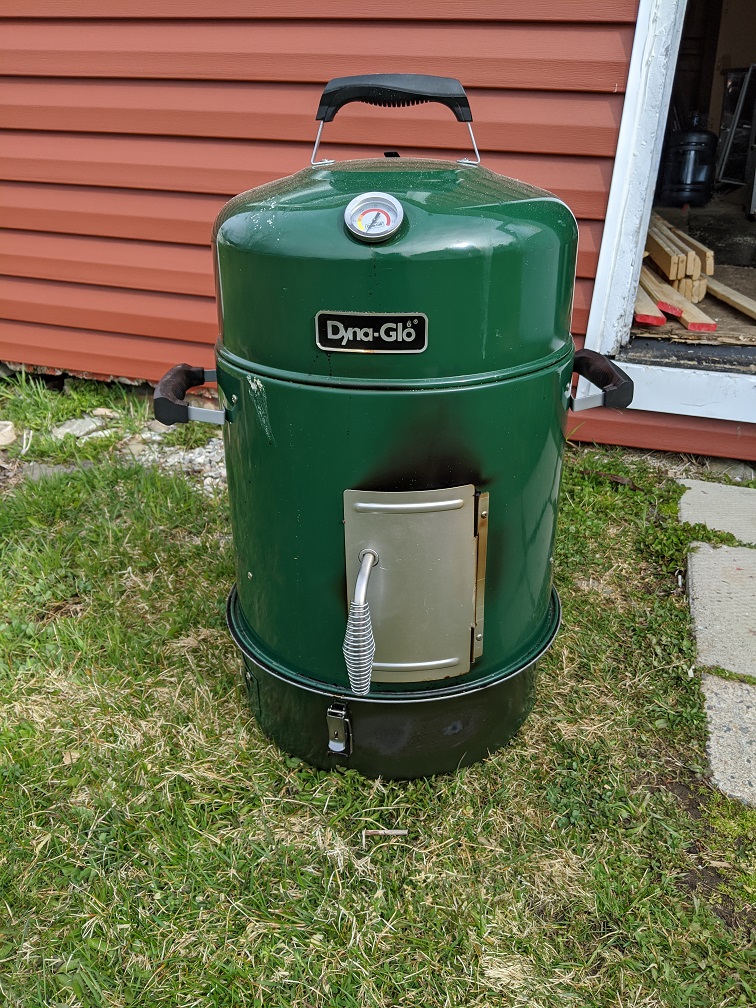
To start, get a fire going using lump charcoal and a charcoal chimney starter. With the fire going, add the wood chips (I used hickory), which had been soaked in water for about 30 minutes. Set up the smoker, fill the water bowl, get the temperature up to around 275°F and put the mackerel in belly-side down. Other than stoking the fire and adding a few more wood chips, Ieave the fish alone until it’s done.
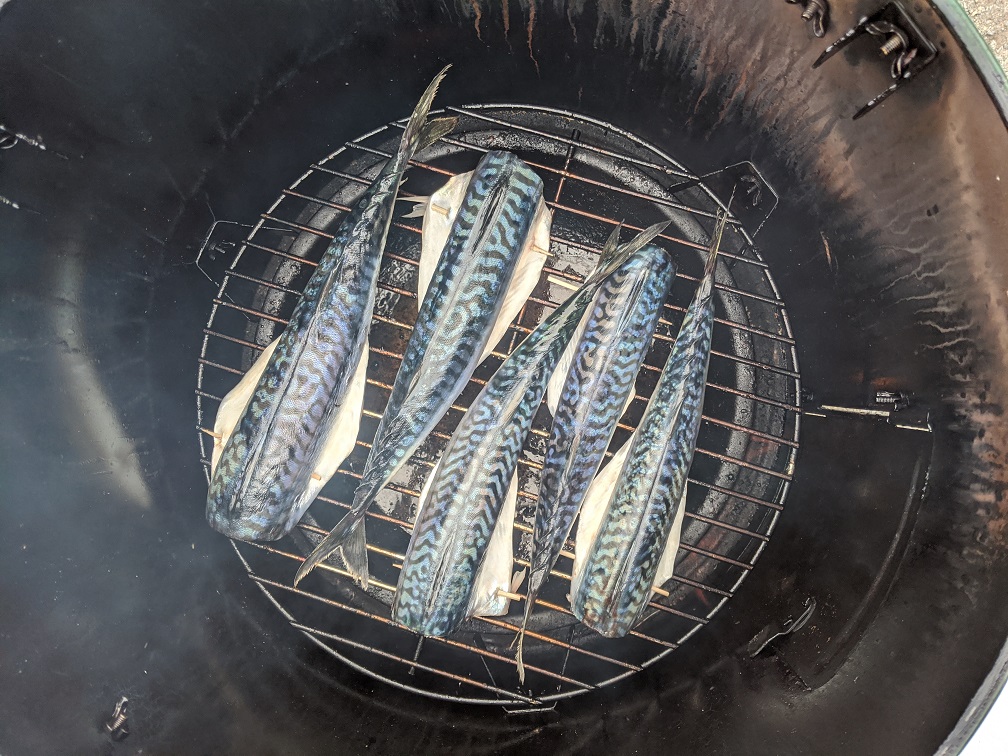
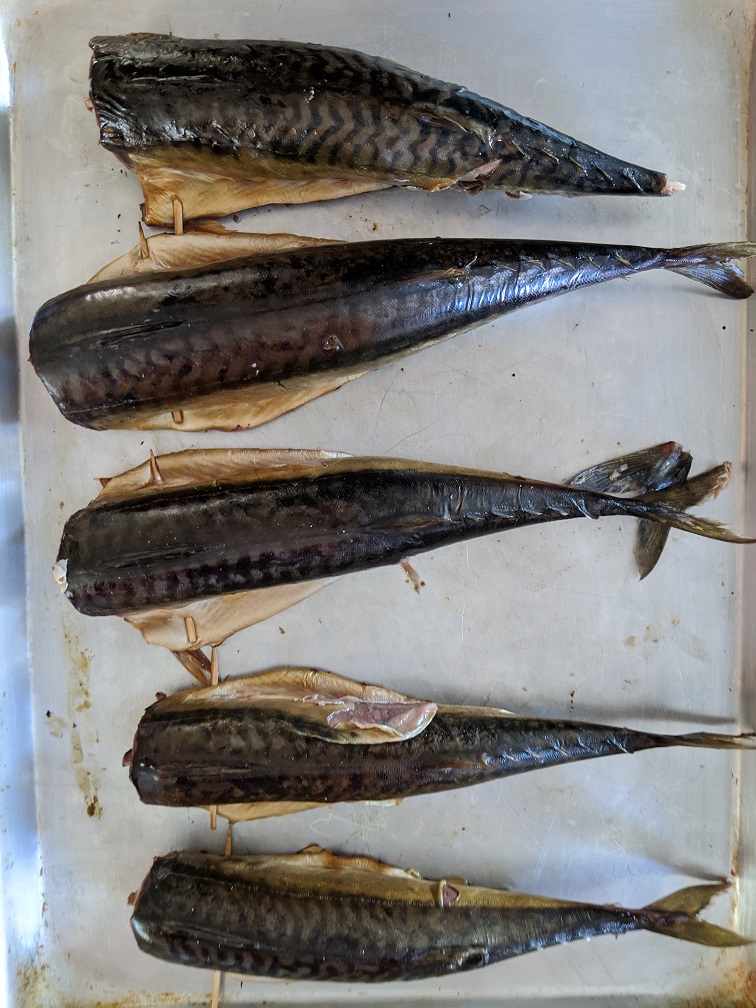
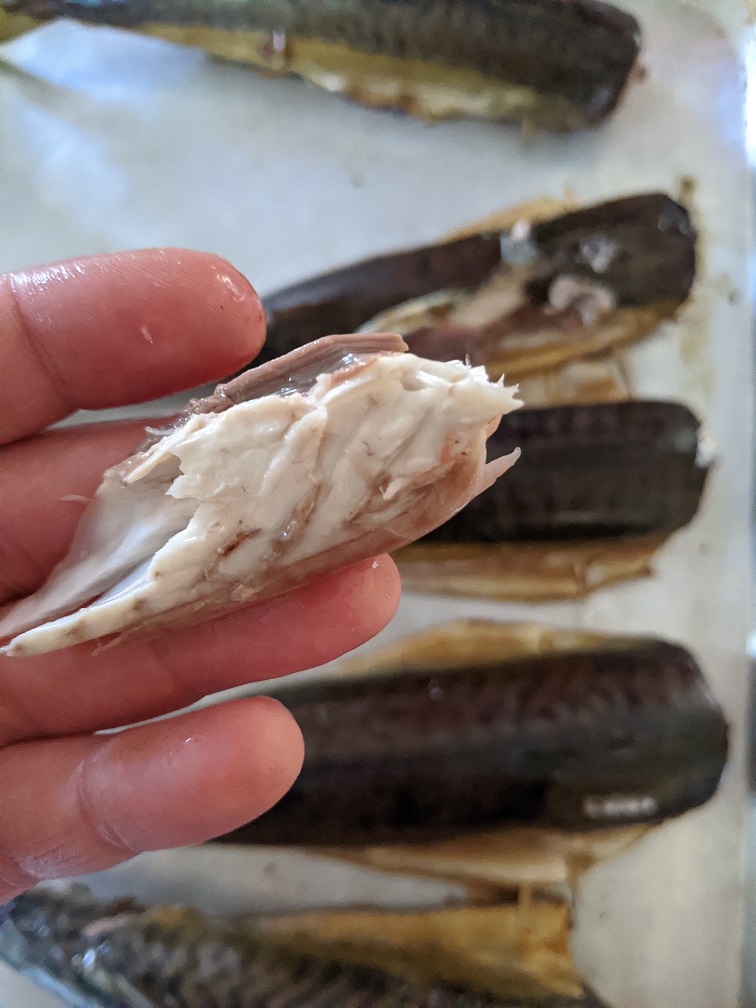
How to Dry Smoke Mackerel
Dry-smoking mackerel is a great way to create a flavorful and savoury meal that can last for a long time. When dry-smoking mackerel, the process is similar to wet smoking, with the notable exception of not adding water to the water pan.
To dry smoke mackerel, simply place the salted fillets on the top rack of the smoker and keep the temperature around 200°F, which is lower than the temperature for wet smoking. Popular wood chip dry-smoking options include oak, hickory, and mesquite.
The other main difference between dry and wet smoking is how much time the fish spends in the smoker. Dry smoking takes longer than wet smoking, with the mackerel typically needing around 3 1/2 hours in the smoker rather than the two hours required for wet smoking.
Throughout the smoking process, make sure to check the temperature of the smoker regularly and adjust the airflow and the number of wood chips added as necessary. After the smoking process is complete, remove the mackerel from the smoker and let it cool down to room temperature.
Once cooled, the mackerel is ready to eat and can be stored in the fridge for a few days or frozen for later use. Dry smoked mackerel can be used in various dishes, like salads or sandwiches, and is an excellent addition to any meal.
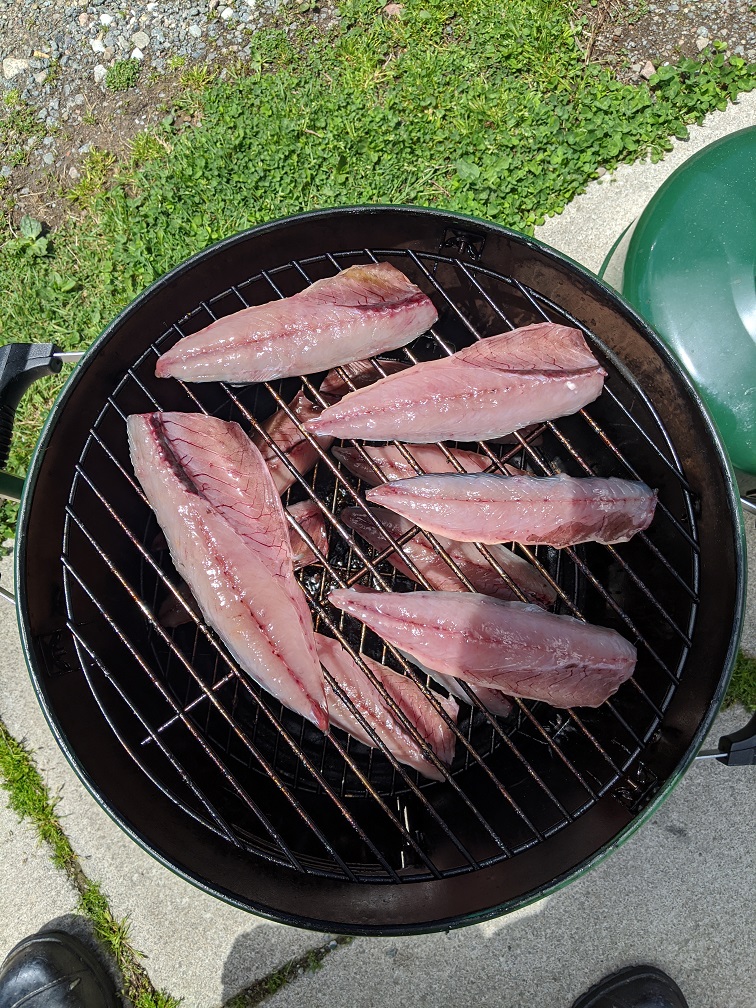
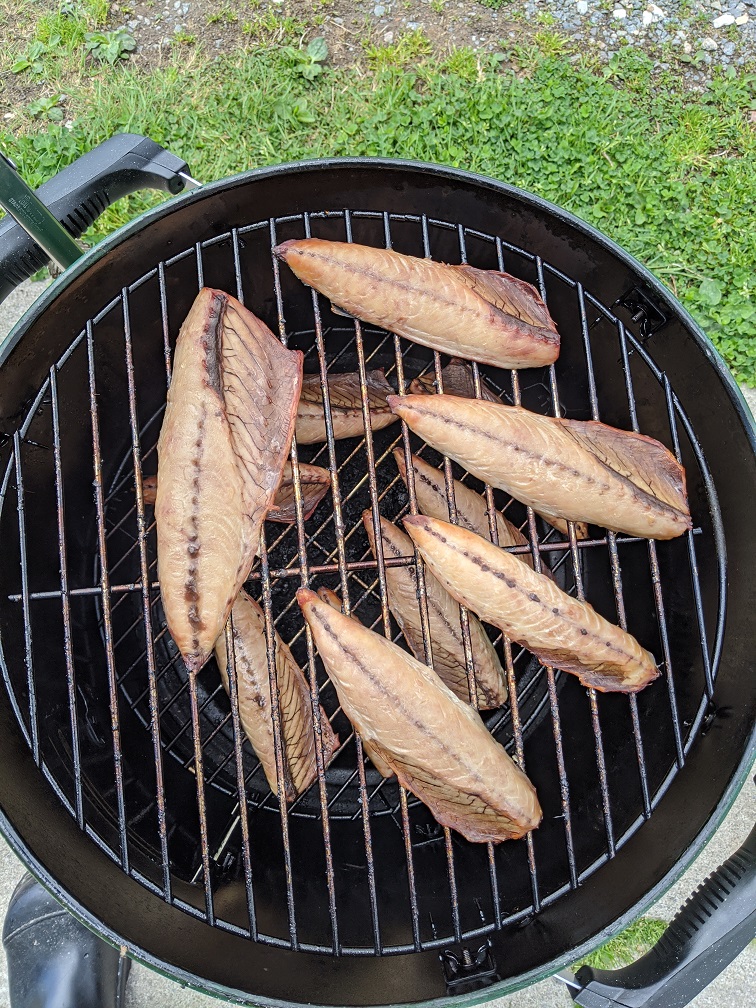
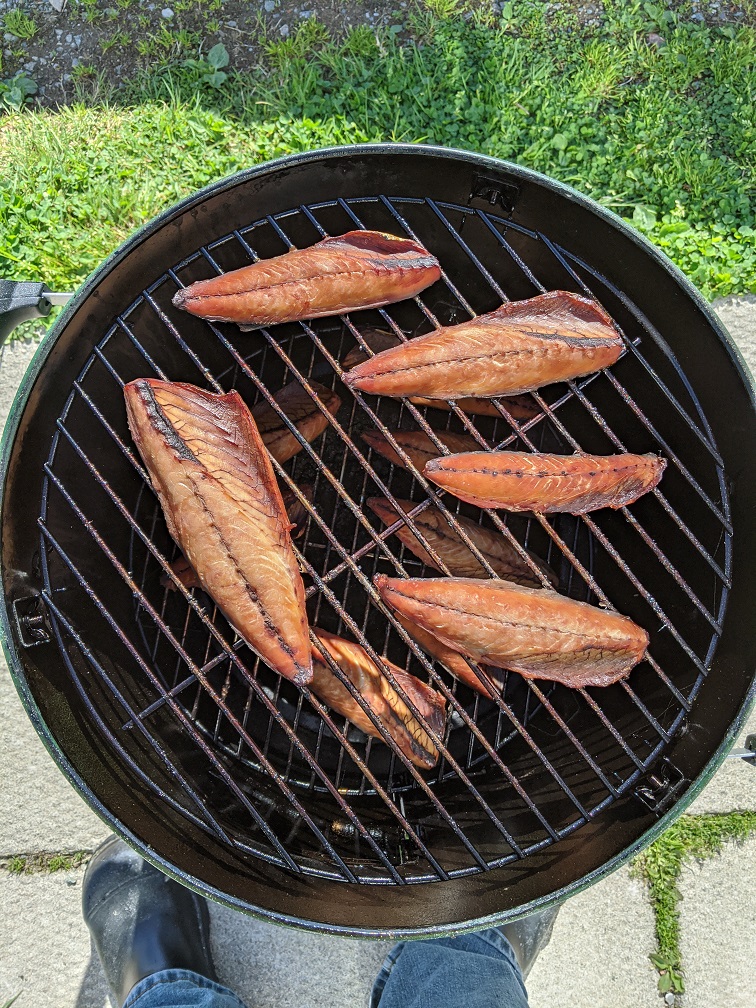
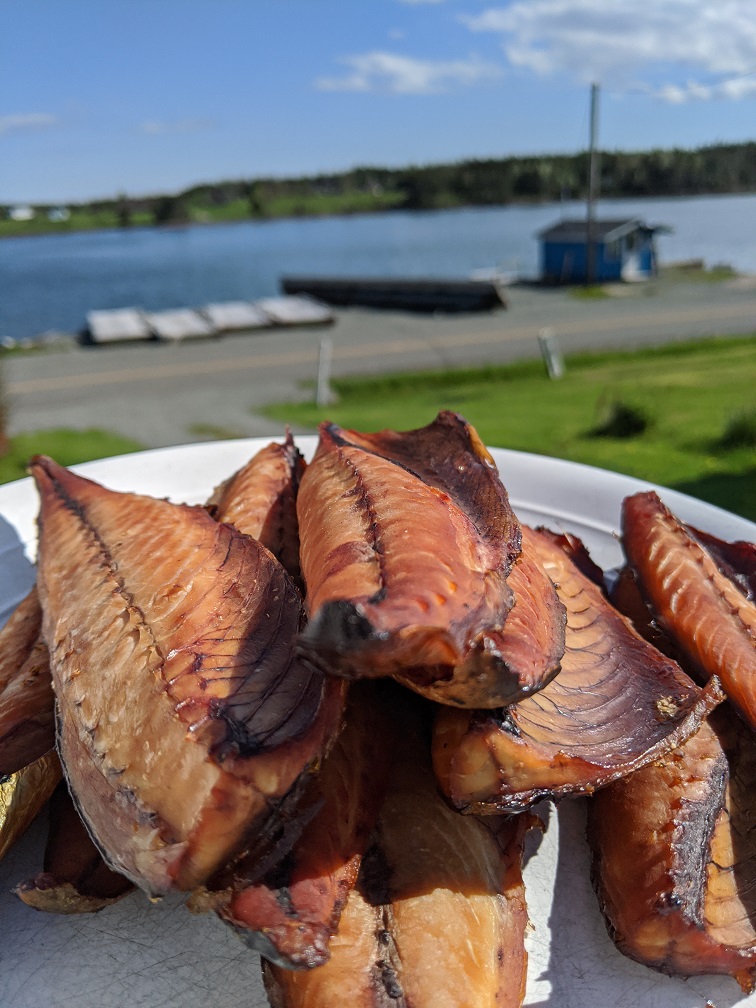
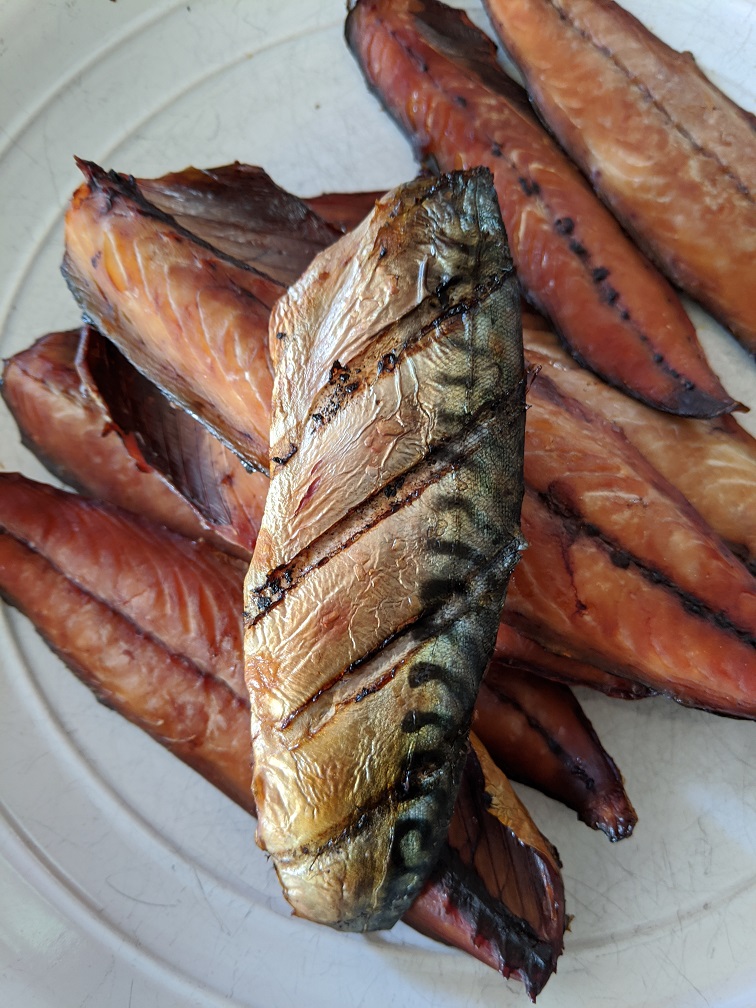
Wet vs. Dry Smoked Mackerel: Which One Tastes Better?
After trying both wet and dry smoked mackerel, I have to say that I was thoroughly impressed with both styles of smoked fish. Wet smoking resulted in a fish that was moist, tender, and had a subtle smokiness that wasn’t overpowering. On the other hand, the dry smoked fish had a much smokier flavour and a drier, chewier texture that was perfect for snacking.
When it comes to choosing between the two styles of smoked fish, it really comes down to personal preference. If you’re looking for a fish that is moist and tender, then wet smoking is the way to go. However, if you’re looking for a fish with a smokier flavour and a drier, chewier texture, then dry smoking is the way to go.
It’s worth noting that both wet and dry smoked mackerel can be used in a variety of dishes, from salads to sandwiches to appetizers. Plus, they can both be stored in the fridge for a few days or frozen for later use, making them an excellent option for meal prep.
At the end of the day, whether you prefer wet or dry smoked mackerel, it’s hard to deny that both styles are delicious in their own way. Personally, I can’t choose a favourite between the two. If you handed me either one with a glass of wine and some buttered gluten-free bread, I’d be a very happy person.
5 Ways to Use Smoked Mackerel in Your Cooking
Now that you’ve successfully smoked your mackerel, you may wonder what to do with it. Luckily, there are countless ways to enjoy this delicious fish. Here are just a few ideas to get you started:
- Smoked Mackerel Spread: Mix smoked mackerel with green onion, herbs, and cream cheese to make a tasty spread for crackers or bread.
- Smoked Mackerel Mousse: Use smoked mackerel as the main ingredient in a mousse or pâté. Add lemon juice, horseradish, and sour cream for an extra kick.
- Smoked Mackerel Salad: Add smoked mackerel to a salad for a flavorful and healthy meal. Mix it with greens, avocado, cherry tomatoes, and a simple vinaigrette.
- Smoked Mackerel Quiche: Incorporate smoked mackerel into a quiche or frittata for a savoury breakfast or brunch dish.
- Smoked Mackerel Chowder: Use smoked mackerel as a base for a delicious and hearty chowder. Add potatoes, onions, garlic, and cream for a rich and flavorful soup.
Whether you’re looking for a quick snack or a more elaborate meal, smoked mackerel is a versatile ingredient that can be used in various dishes. Try one of these ideas, or get creative and create your own unique recipe. One thing’s for sure – your taste buds will thank you.
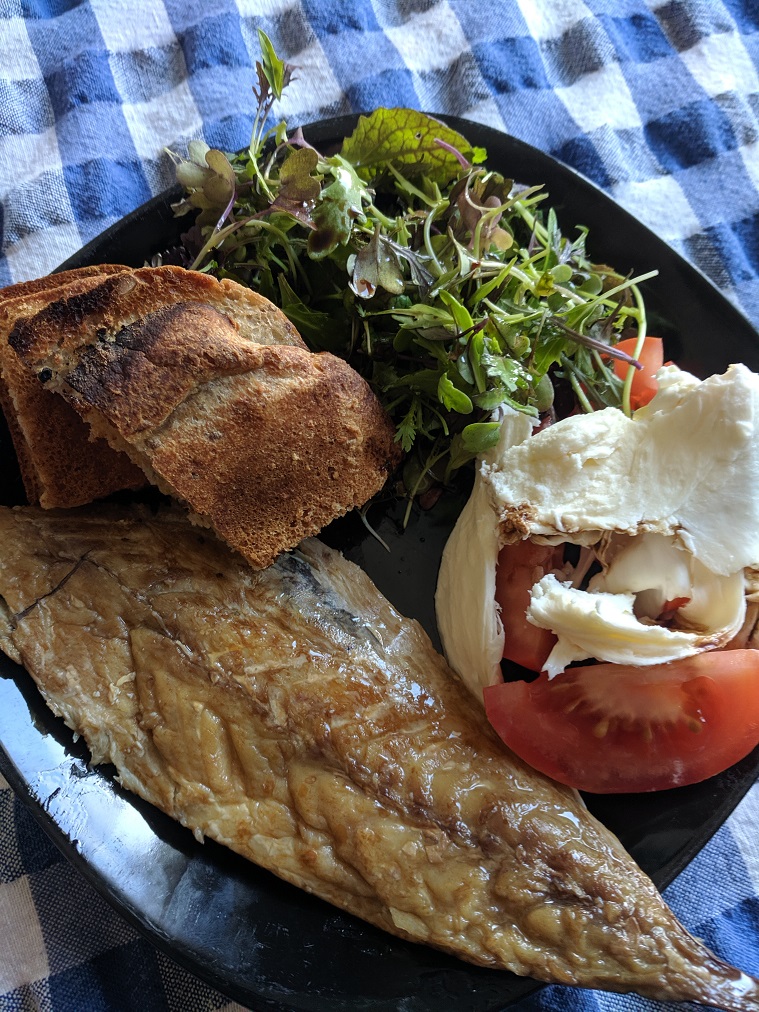
Conclusion
As we come to the end of this post, I hope that you have gained a better understanding of the process involved in smoking mackerel. While it may seem intimidating at first, the truth is that smoking fish is a simple and rewarding experience that can yield delicious results. Whether you prefer wet or dry smoking, both methods have their unique benefits that can be enjoyed in a variety of ways.
From using smoked mackerel as a flavorful spread to adding it to salads and sandwiches, the possibilities are endless, not to mention the health benefits of eating fish!
If you’re feeling adventurous, I encourage you to try smoking mackerel for yourself. It’s a fun and fulfilling experience that can be enjoyed with friends and family. And if you’re already a pro at smoking fish, I hope you found some new tips and tricks in this post.
Thank you for taking the time to read this, and if you found it helpful, please share it with your friends and family. Don’t forget to subscribe to the blog for more exciting content, and have a great weekend!
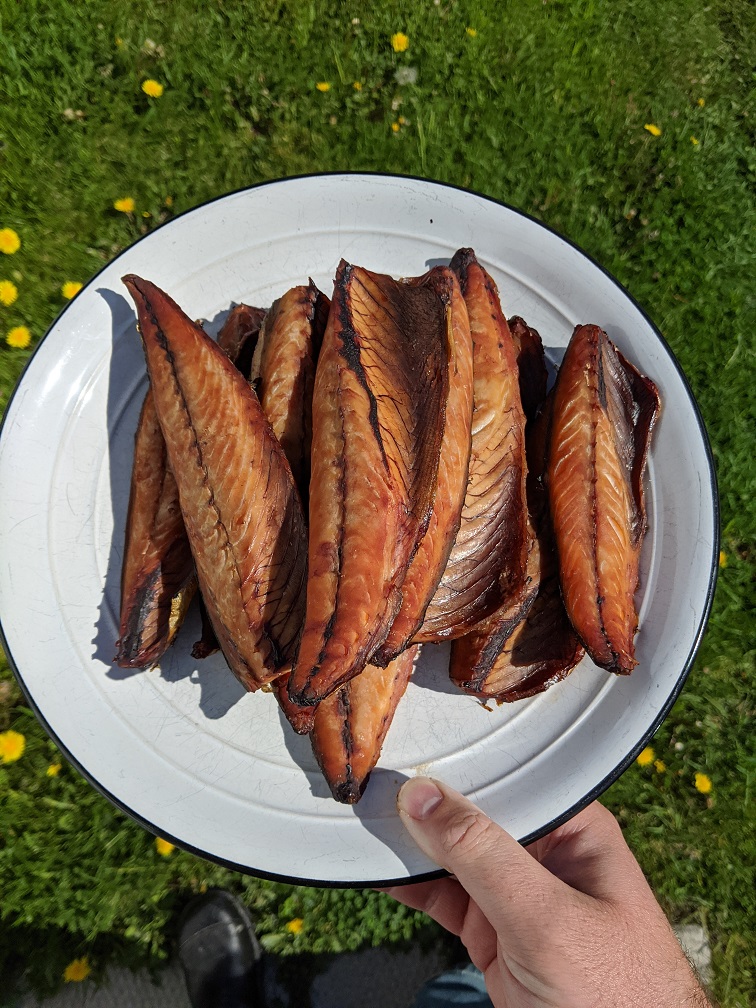

Exelente y comprensible